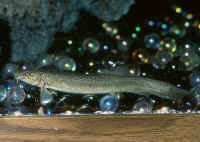
.jpg)
Some studies noted increases in cortical thickness in 22q11DS relative to controls, with focal thinning in the superior temporal gyrus and cingulate cortex, along with global reductions in surface area.


More recent studies have parcellated the cerebral cortex in detail, investigating measures of cortical thickness and surface area, which may have distinct genetic and neurobiological origins. A rostro-caudal gradient of volumetric reduction was also reported, with greatest reduction in occipital lobes, while frontal regions were relatively preserved. Early magnetic resonance imaging (MRI) studies reported whole-brain volumetric reductions in 22q11DS, particularly in midline cortical regions. Neuroanatomic alterations in 22q11DS have been investigated in several single-site studies. Given its known, relatively homogeneous genetic etiology, investigation of this microdeletion offers a unique opportunity to identify early neural biomarkers of psychosis. 22q11DS is also associated with varied phenotypic expression, including cardiac defects, craniofacial anomalies, and intellectual disability. 22q11DS is one of the most penetrant genetic risk factors for psychotic illness, increasing risk around 30-fold relative to the general population. One such recurrent CNV is a deletion in the 22q11.2 region, typically encompassing ~50 protein-coding genes, which causes the 22q11.2 deletion syndrome (22q11DS OMIM #188400, #192430). Micro-deletions or duplications of chromosomal regions (copy number variants CNVs) are causally involved in a range of developmental brain disorders. These consistent cross-site findings highlight the homogeneity of this single genetic etiology, and support the suitability of 22q11DS as a biological model of schizophrenia. Psychotic illness in this highly penetrant deletion was associated with similar neuroanatomic abnormalities to idiopathic schizophrenia. We found a robust neuroanatomic signature of 22q11DS, and the first evidence that deletion size impacts brain structure. Finally, cortical SA was significantly greater in 22q11DS cases with smaller 1.5 Mb deletions, relative to those with typical 3 Mb deletions. Comparison of 22q11DS-psychosis to idiopathic schizophrenia (ENIGMA-Schizophrenia Working Group) revealed significant convergence of affected brain regions, particularly in fronto-temporal cortex. controls were classified with 93.8% accuracy based on these neuroanatomic patterns. Cortical surface area (SA), however, showed pervasive reductions in 22q11DS (left/right hemispheres: d = −1.01/−1.02). Compared to controls, 22q11DS individuals showed thicker cortical gray matter overall (left/right hemispheres: Cohen’s d = 0.61/0.65), but focal thickness reduction in temporal and cingulate cortex. The imaging data were collected from 10 centers worldwide, including 474 subjects with 22q11DS (age = 18.2 ± 8.6 46.9% female) and 315 typically developing, matched controls (age = 18.0 ± 9.2 45.9% female). To address these issues, we developed the ENIGMA (Enhancing Neuro Imaging Genetics Through Meta-Analysis) 22q11.2 Working Group, representing the largest analysis of brain structural alterations in 22q11DS to date. Prior studies reported widespread cortical changes in 22q11DS, but were generally underpowered to characterize neuroanatomic abnormalities associated with psychosis in 22q11DS, and/or neuroanatomic effects of variability in deletion size. The 22q11.2 deletion (22q11DS) is a common chromosomal microdeletion and a potent risk factor for psychotic illness. Molecular Psychiatry volume 25, pages 1822–1834 ( 2020) Cite this article Large-scale mapping of cortical alterations in 22q11.2 deletion syndrome: Convergence with idiopathic psychosis and effects of deletion size


 0 kommentar(er)
0 kommentar(er)
